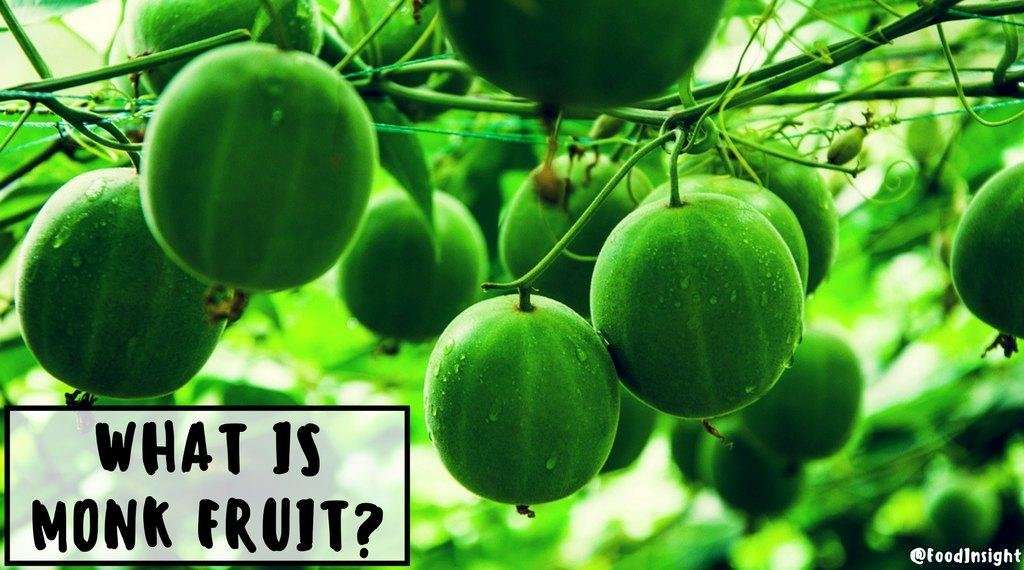Curious about low-calorie sweeteners? You’re not alone. Conflicting information about low-calorie sweeteners seems to be reaching new heights, so we’ve searched high and low for the facts. Here’s the low-down on monk fruit.
What is Monk Fruit and Where Did it Come From?
Monk fruit sweeteners, also known as lo han guo, come from a small round fruit grown in Southeast Asia. Monk fruit sweeteners are extracted by removing the seeds and skin, crushing the fruit and collecting the juice. This sweet but zero-calorie juice is often used in food and beverages to help reduce calories without sacrificing sweetness.
The scientific name for monk fruit, Siraitia grosvenorii, is an ode to Gilbert Hovey Grosvenor, the former president of the National Geographic Society (NGS). NGS helped fund the 1930’s expedition in China to find the plant in its natural habitat. In addition, monk fruit is said to be named after Buddhist monks who grew the fruit eight centuries ago in mountainous regions of Southern China.
Monk fruit is 100-250 times sweeter than sugar, so a little goes a long way. This sweetener provides the same level of sweetness as sugar in much smaller quantities. Monk fruit extract and concentrates provide no calories and are the primary sweetener found in brand names like Monk Fruit in the Raw® and PureLo®. However, some foods and beverages containing monk fruit sweeteners may contain other ingredients that contain calories.
Yes, monk fruit is safe to consume. It’s one of eight low and no-calorie sweeteners permitted by the FDA for use in the US food supply. All eight have been rigorously tested and reviewed. Leading global health authorities such as the European Food Safety Authority (EFSA), FAO/WHO Joint Expert Committee on Food Additives (JECFA), U.S. Food and Drug Administration (FDA), Food Standards Australia New Zealand (FSANZ) and Health Canada have found low and no-calorie sweeteners to be safe. Monk fruit extract has been recognized as Generally Recognized as Safe (GRAS) by the FDA for use in foods and beverages since 2010.
What’s the Bottom Line on Monk Fruit?
All foods can have a place in our diets, and low- and no- calorie sweeteners are no different. In addition, monk fruit is one of many safe options that can be included in broader weight reduction or weight maintenance plans. What’s most important is to build a healthy eating style and support it with other healthy habits that are sustainable and tailored to your health and lifestyle needs.
Extract more monk fruit knowledge from our infographic below. We think you’ll find it fruitful.
Still looking for more? Take a bite out of our Monk Fruit Sweeteners Fact Sheet.

TooShiftyForYou on May 10th, 2018 at 13:48 UTC »
The fruits are slowly dried in ovens, preserving them and removing most of the unwanted aromas. However, this technique also leads to the formation of several bitter and astringent flavors. This limits the use of the dried fruits and extracts to the preparation of diluted tea, soup, and as a sweetener for products that would usually have sugar or honey added to them.
So it's stinky when taken naturally or bitter when the aroma is removed, hence the lack of popularity.
Source
treasureFINGERS on May 10th, 2018 at 13:18 UTC »
stevia has a unique sweetness you can tell along with splenda and apartame. As much as I dislike stevia/aspartame i would definitely choose them over Monkfruit extract, tastes like shit.
Black_RL on May 10th, 2018 at 13:14 UTC »
Why isn’t it more widely used then?